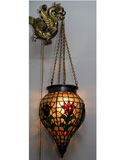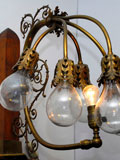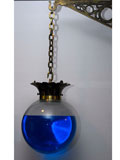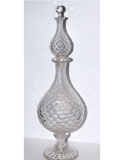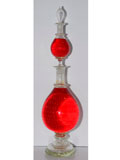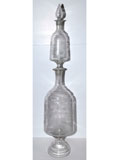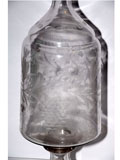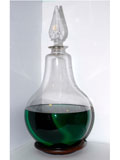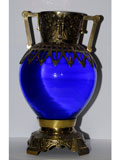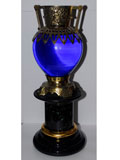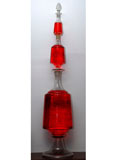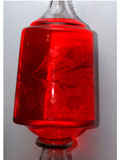
What Are Show Globes?
Show globes, or carboys, are typically clear glass vessels filled with colored liquid and displayed in an apothecary's window. In addition to its colorful liquid, many owners used silver spheres or mirrors to reflect light onto the globes. In its most basic form, a show globe is a single glass vessel with a stopper, but throughout their existence, manufacturers and apothecaries have developed many variations to show their originality. Most commonly, they are made of plain glass, but etched designs or various cuts such as punty or quilted can be found, which gives the glass more depth and shine when illuminated. The neck of the globe, which holds the stopper, may be a short "stumpy" version, while others may have a long "swan" neck. Although many sizes were made with respect to the position in the window display, the typical show globe is one-half to two gallons in size. Many globes have two tiers, with one globe and one stopper as a tier each; however, some show globes have multiple stoppers with each tier tapering towards the top. Single and double towered globes were found in around the world, but triple towered globes were predominantly found in the United States. Another way to show off the apothecary's originality was how the show globe was exhibited. Some were suspended from the wall or ceiling using iron brackets for support, and others were free-standing, presented on decorative wooden, iron, or glass pedestals. Some apothecaries even covered the street lamps outside of the business with colored panes and the word "chemist" to attract customers.
